Syria conflict updates: Thousands flee Syrian city of Homs as rebels get closer to Damascus
Syrian insurgents are advancing along the road from Aleppo to Damascus at lightning speed, advising residents of Homs: “Your time has come.” Follow updates.
World
Don't miss out on the headlines from World. Followed categories will be added to My News.
Syrian rebels are approaching the country’s third-largest city, Homs, as they advance along the road from Aleppo to Damascus in a bid to overthrow President Bashar al-Assad.
Tens of thousands of people are fleeing their homes after the group’s leader Abu Mohammed al-Jolani told residents of the city “your time has come”
“The goal of the revolution remains the overthrow of this regime. It is our right to use all available means to achieve that goal,” the Hayat Tahrir al-Sham (HTS) leader told CNN.
The group posted on Telegram saying it has “liberated the last village on the outskirts of the city of Homs” and is now approaching the city’s walls - although this is not verified.
This is the biggest uprising against Syria’s government in years.
New video shows terrified residents battling major gridlock as they rush to escape.
The lightning offensive has sent shockwaves through the Middle East and even alarmed the Russian Embassy in Damascus, which has advised its nationals to leave Syria.
Russia’s support has helped Bashar al-Assad stay in power throughout 13 years of Syria’s civil war and Russian planes have bombed a bridge near Rastan to try and slow the rebel advance.
“Our forces have liberated the last village on the outskirts of the city of Homs and are now on its walls,” the rebels have posted on Telegram.
In little over a week, the offensive has seen Syria’s second city Aleppo and strategically located Hama fall from Assad’s control, for the first time since the civil war began in 2011.
If the rebels capture Homs, it will isolate Damascus from the Mediterranean coast, placing the government - which has been under Assad rule for five decades - in jeopardy.
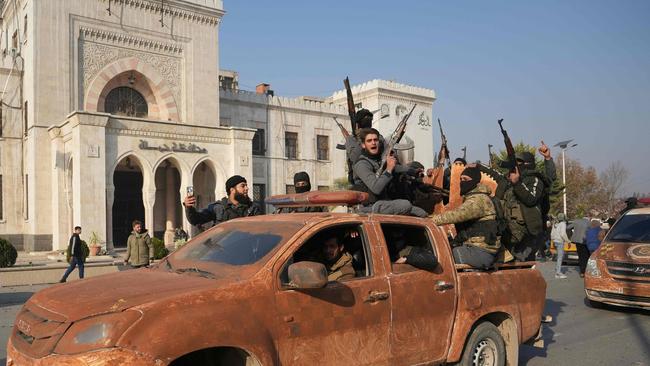
The rebels were just five kilometres from the edge of Homs, according to the Syrian Observatory for Human Rights monitor.
The rebel alliance conducting the offensive that began on November 27 is led by HTS, which is rooted in the Syrian branch of Al-Qaeda but has sought to soften its image in recent years.
According to the Observatory, Syrian troops and Iran-backed forces “suddenly” withdrew from Deir Ezzor in eastern Syria and headed towards central Syria where Homs is located.
The rebels launched their offensive in northern Syria the same day a ceasefire took effect in the war between Israel and Lebanese group Hezbollah, which along with Russia and Iran have been crucial backers of Assad’s government.
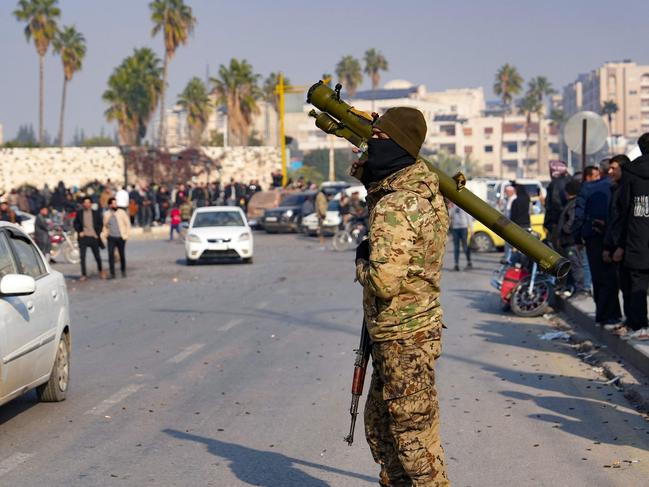
Turkey, which has backed the opposition, said it would hold talks this weekend with Russia and Iran in Qatar to discuss the situation in Syria.
Turkey’s President Recep Tayyip Erdogan said he hoped the rebel advance would go off “without incident”.
Syria’s Kurdish-led force said it was open to dialogue with Turkey and the rebels, saying that the offensive had heralded a “new” political reality for the country.
FOLLOW UPDATES BELOW:
REBELS CAPTURE HAMA
Islamist-led rebels have captured the central Syrian city of Hama in a new blow to President Bashar al-Assad’s forces days after they lost the country’s commercial hub Aleppo.
The rebels led by Islamist group Hayat Tahrir al-Sham (HTS) launched their offensive little more than a week ago, just as a ceasefire in neighbouring Lebanon took hold between Israel and Assad’s ally Hezbollah.
Following overnight clashes, the rebels stormed Hama “from several sides” and engaged in street battles with Assad’s forces, Britain-based war monitor, the Syrian Observatory for Human Rights, said.
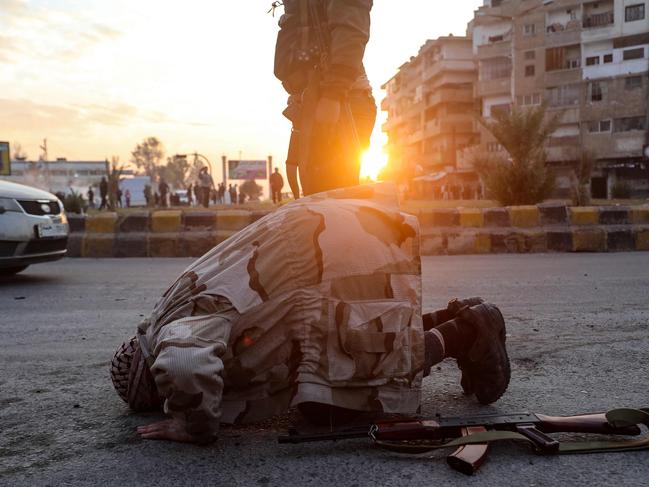
The rebels later announced “the complete liberation of the city of Hama”, in a message on their Telegram channel.
Rebel fighters kissed the ground and let off volleys of celebratory gunfire as they entered Syria’s fourth largest city.
Many residents turned out to welcome the rebel fighters. An AFP photographer saw some residents set fire to a giant poster of Assad on the facade of city hall.
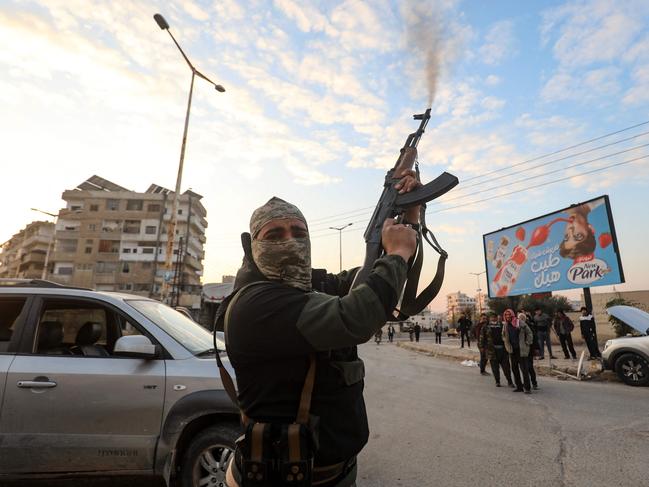
The army admitted losing control of the city, strategically located between Aleppo and Assad’s seat of power in Damascus.
Defence Minister Ali Abbas insisted that the army’s withdrawal was a “temporary tactical measure”.
“Our forces are still in the vicinity,” he said in a statement carried by the official SANA news agency.
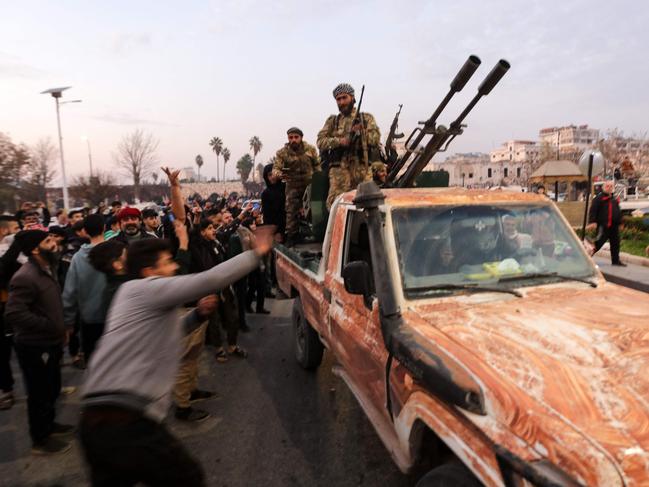
Aron Lund, a fellow of the Century International think tank, called the loss of Hama “a massive, massive blow to the Syrian government” because the army should have had an advantage there to reverse rebel gains “and they couldn’t do it”.
He said HTS would now try to push on towards Syria’s third largest city, Homs, some 40km to the south, where many residents were already leaving on Thursday, images on social media showed.
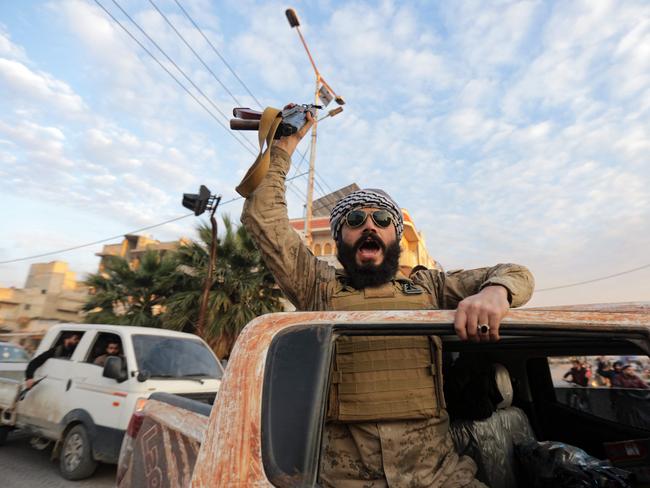
Observatory director Rami Abdel Rahman reported a mass exodus from the city of members of Assad’s Alawite minority community.
He said tens of thousands were heading towards areas along Syria’s Mediterranean coast, where the Alawites, followers of an offshoot of Shiite Islam, form the majority.
“We are afraid and worried that what happened in Hama will be repeated in Homs,” said a civil servant, who gave his name only as Abbas.
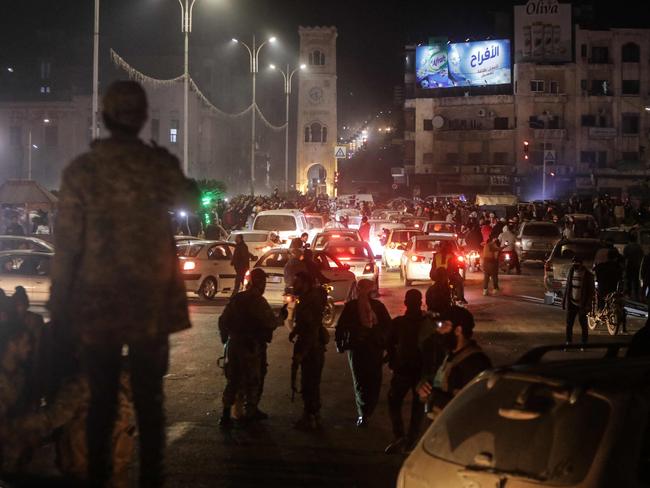
“We fear they (the rebels) will take revenge on us,” the 33-year-old said.
Human Rights Watch warned the fighting “raises concerns that civilians face a real risk of serious abuses at the hands of opposition armed groups and the Syrian government”.
HTS is rooted in Syria’s al-Qaeda branch.
The group has sought to moderate its image in recent years, but experts say it faces a challenge convincing Western governments it has fully renounced hard line jihadism.
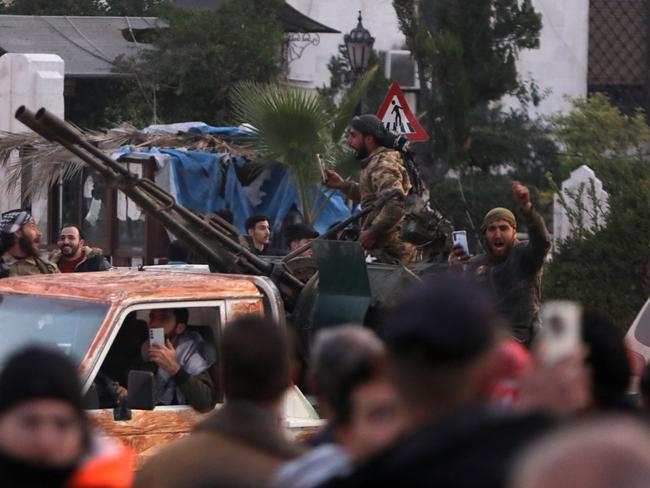
The United States maintains hundreds of troops in eastern Syria as part of a coalition formed against Islamic State group jihadists.
Syria has been at war since Assad cracked down on democracy protests in 2011, and the conflict has since drawn in foreign powers and jihadists, and left 500,000 people dead.
With Assad’s army back in control of much of the country after years of shifting battle lines, the conflict had been mostly dormant.
CHILDREN AMONG DEAD IN SYRIAN/RUSSIAN STRIKE
Air raids conducted jointly by the Syrian and Russian air forces on several areas of Idlib province in northwest Syria on Monday local time killed at least 11 civilians, including five children, according to the Observatory.
“The strikes targeted … displaced families living on the edge of a displacement camp,” said Hussein Ahmed Khudur, a 45-year-old teacher who sought refuge at the camp from fighting in Aleppo province.
He said one of the children who died was a student of his, and that the other four were his four sisters.

White Helmets civil defence forces based in Idlib said Russian air strikes had struck five healthcare facilities including a maternity hospital. At least 18 people were killed and 35 injured, they said, adding that they feared numbers could rise.
RUSSIA AND IRAN PLEDGE SUPPORT FOR ASSAD
Russia, which first intervened directly in the Syrian war in 2015, said it continued to support Assad.
“We of course continue to support Bashar al-Assad and we continue contacts at the appropriate levels, we are analysing the situation,” Kremlin spokesman Dmitry Peskov told journalists.
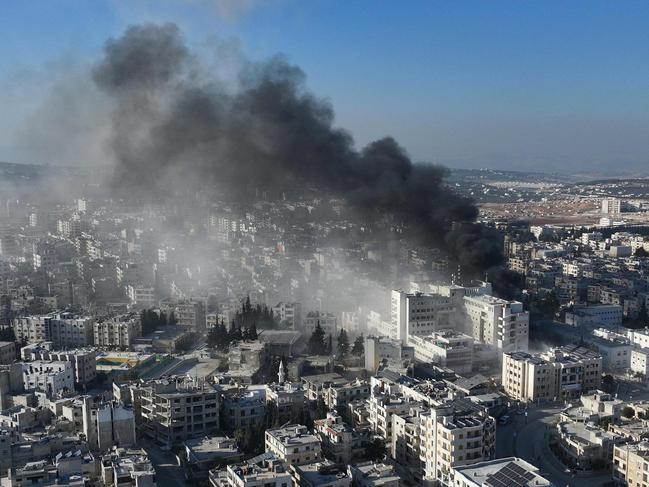
Iran’s top diplomat Abbas Araghchi, was in Syria on Sunday to deliver a message of support, state media said.
On Monday, Iranian foreign ministry spokesman Esmail Baqaei said the Islamic republic had entered Syria at the official invitation of Assad’s government.
“Our military advisers were present in Syria, and they are still present. The presence of advisers from the Islamic Republic of Iran in Syria is not a new thing,” he said.
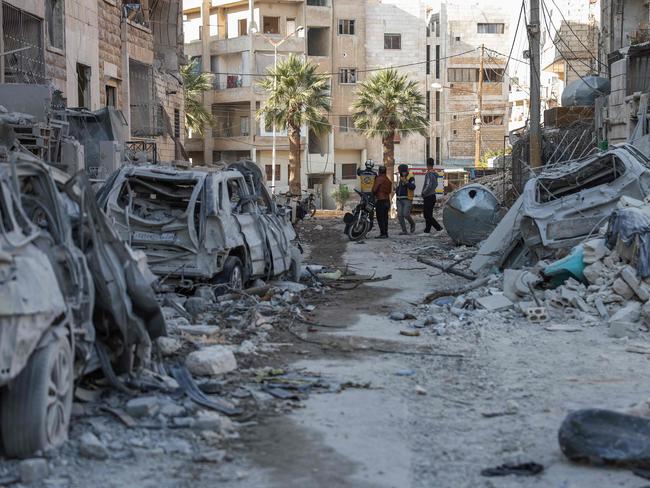
US, EU, UN URGE PUSH FOR DE-ESCALATION
The United States and European Union called for de-escalation in Syria, while UN Secretary-General Antonio Guterres said he was “alarmed” by the violence and called for an immediate halt to the fighting.
“We want to see all countries use their influence – use their leverage – to push for de-escalation, protection of civilians and ultimately, a political process forward,” US State Department spokesman Matthew Miller told reporters.
In a statement issued by EU foreign affairs spokesperson Anouar El Anouni, the European Union also called for de-escalation and the protection of civilians, while also condemning Assad backer Russia for conducting air strikes in his support.
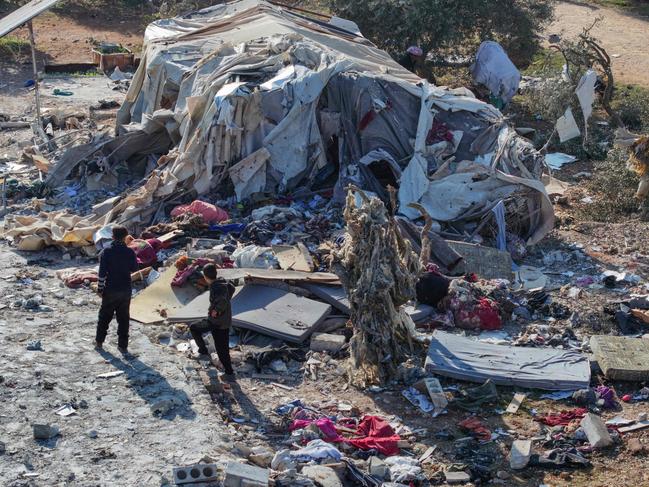
PANIC IN ALEPPO
Aleppo is home to two million people and saw fierce fighting earlier in the war.
The Islamist Hayat Tahrir al-Sham (HTS) and its allies took the city at the weekend, except for neighbourhoods controlled by Kurdish forces, according to the Syrian Observatory for Human Rights.
They also seized Aleppo International Airport.
HTS, led by al-Qaeda’s former Syria branch, has faced accusations of human rights abuses including torturing detainees.

Abu Sufyan, a rebel commander, told AFP: “God willing, we will continue, go into Damascus and liberate the rest of Syria.” One Aleppo resident spoke of panic.
“There were terrible traffic jams – it took people 13 to 15 hours to reach Homs” in central Syria, which is under government control. Normally, he said, it would take a couple of hours.
AFPTV footage showed rebels patrolling the streets, some burning a Syrian flag and others holding the flag of the revolution.

IS TURKEY INVOLVED?
Turkey could be one of the big winners from the new Syria crisis, giving it a chance to tackle its Syrian refugee problem and the Kurdish threat along its border, observers say.
Turkey, which backs rebel factions in Syria, has rejected any suggestion that “foreign interference” was behind the offensive launched by jihadists in the country’s north.
“It would be a mistake at this time to try to explain the events in Syria by any foreign interference,” Foreign Minister Hakan Fidan said at a joint press conference in Ankara with his Iranian counterpart Abbas Araghchi.
But Aron Lund of the Century International think tank said a major question hangs over possible Turkish involvement.
“I have a hard time imagining that Turkey-backed groups could launch a major rebel offensive out of Turkey-held areas without Turkey being very significantly involved,” he said.
“But I also don’t think Turkey necessarily wanted the rebels to get this far.”
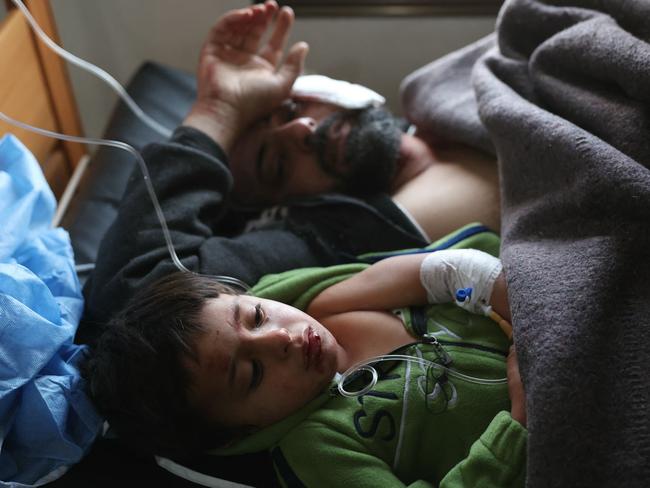
Turkey’s President Recep Tayyip Erdogan called for an end to the “instability” in Syria and an agreement to stop the civil war.
On a visit to Ankara, Iranian Foreign Minister Abbas Araghchi said it was crucial “to protect the achievements” of the so-called Astana process to end Syria’s civil war, which involves Turkey, Russia and Iran.
Several hours later, he said the respective foreign ministers would meet on the matter next weekend in Qatar.
“We will try to activate this process again,” he said.
– with AFP
More Coverage
Originally published as Syria conflict updates: Thousands flee Syrian city of Homs as rebels get closer to Damascus


